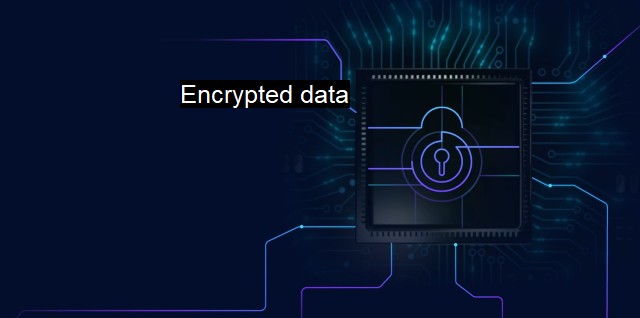What is Encrypted data?
The Power of Encryption: Safeguarding Your Business from Cyber Threats and Protecting Sensitive Data
Encrypted data refers to information or data that has been transformed into a code to prevent unauthorized access. The principle behind this concept can be found within the realm of cryptography, which is an age-old practice of securing communication in the presence of third parties or adversaries. the term encrypted data is pivotal as it ensures that data transmitted over networks is unreadable and secure.The primary objective behind data encryption is to protect digital data confidentiality as it is stored on computer systems and transmitted using the internet or other computer networks. The existing software and hardware-based encryption algorithms apply complex cryptology to data to ensure they remain safe and inaccessible to unauthorized persons.
In a world where data breaches have become rampant, organizations large and small use encryption to protect sensitive information from getting into the wrong hands. With encrypted data, even if cybercriminals manage to bypass network security measures, they would be left with a garbled, indecipherable mess, instead of valuable, readable information. By doing so, encryption mitigates the impact of these breaches by making the captured data very difficult, if not impossible, to decode back into its original, readable format without the correct decryption key.
Regarding antivirus and specifically, cybersecurity, encrypted data can serve both as a protective measure for the good guys and a challenging obstacle for the bad guys. Antivirus software often uses encryption to secure its sensitive configuration files so cybercriminals cannot alter its settings to render the antivirus incompetent. More and more antimalware vendors are adding automatic file encryption to their security products to offer additional layers of protection.
On the flip side, the challenge with antivirus software comes from increasingly sophisticated malware, which exploits encrypted protocols to cloak its communication with attackers' command-and-control servers. Some advanced persistent threats (APTs) may even come equipped with a full arsenal of various encryption methods to help the malware hide from detection and thus bypass security systems.
Encryption remains one of the most effective ways to achieve data security. To read an encrypted file, you must have access to a secret key or password that enables decryption. Encrypted data brings about an additional strong line of defense other than usernames and passwords. With encryption, one can be sure that their information won't be easily readable to those without the necessary decryption keys, even if the data is breached.
Individuals, too, can employ data encryption for tasks such as securing confidential emails or protecting file-systems on personal computers. Given the increasing demand for encrypted communication tools, tech giants like Google have started offering end-to-end encryption services that protect data both in transit and at rest.
While encryption can significantly augment a computer system's security health, it, too, comes with certain risks. For instance, losing the encryption keys would mean that the data is lost forever, as it would be virtually impossible to decrypt without the right key. Also, the computation resources required for complex encryption can significantly slow down system operations, which can be a concern for businesses reliant on high-speed data transfers.
The benefits conferred by encryption certainly outweigh its potential drawbacks. As more common people and organizations come to grips with the extent of cyber threats they face, the awareness and adoption rate for data encryption will inevitably increase. This will make encrypted data the spine of defense against digital espionage, cybercrime, and data breaches. Therefore encryption is vital to the maintenance of data privacy and security amidst the ongoing war against increasingly sophisticated cyber threats.

Encrypted data FAQs
What is encrypted data?
Encrypted data refers to information that has been transformed into a secret code using encryption algorithms. This coding ensures that unauthorized people cannot access the data without a decryption key.How is encrypted data relevant to cybersecurity?
Encrypting data is essential for cybersecurity as it secures sensitive information against unauthorized access or theft. Encryption helps to prevent hacking, fraud, and other malicious cyber-attacks.Can antivirus software protect encrypted data?
Yes, antivirus software can protect encrypted data by detecting and preventing malware or viruses from accessing the data. Antivirus solutions usually scan files for any known threats and remove them before they can do any damage.What are the different types of encryption technologies used for data security?
There are various types of encryption technologies used for data security, including symmetric-key encryption, asymmetric-key encryption, and hashing. Each technology has its own unique method of encrypting data and is used based on the specific security requirements of the data.| | A | | | B | | | C | | | D | | | E | | | F | | | G | | | H | | | I | | | J | | | K | | | L | | | M | |
| | N | | | O | | | P | | | Q | | | R | | | S | | | T | | | U | | | V | | | W | | | X | | | Y | | | Z | |
| | 1 | | | 2 | | | 3 | | | 4 | | | 7 | | | 8 | | |||||||